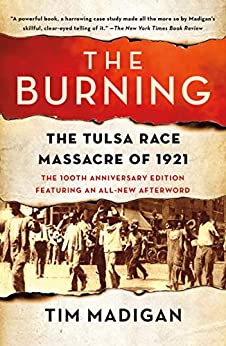More on this book
Community
Kindle Notes & Highlights
by
Tim Madigan
Read between
June 8 - September 13, 2020
“Americans have been loud in the denunciation of pogroms in Poland, of the massacres in Armenia and Russia and Mexico, and they were ready to go to war to avenge the victims of barbarous German warlords,” said the Post. “But unless we can create a public sentiment in this country strong enough to restrain such intolerant outbreaks as Tulsa has witnessed, we shall be unable in the future to protest with any moral weight against anything that may happen in less favored parts of the world.”
As the whites had moved north on June 1, they put the torch to more than 1,115 Negro homes (314 more were looted, but not burned), five hotels, thirty-one restaurants, four drugstores, eight doctors’ offices, the new Dunbar School, two dozen grocery stores, the Negro hospital, the public library, and even a dozen churches, including the community’s most magnificent new edifice, Mount Zion Baptist Church.
The American Negro had changed, had become agitated by propaganda promoting ideas of social equality: “This agitation resulted in the accumulation of firearms among the people and the storage of quantities of ammunition,” the report concluded, “all of which was accumulative in the minds of the Negro, which led them as people to believe in equal rights, social equality, and their ability to demand the same.”


